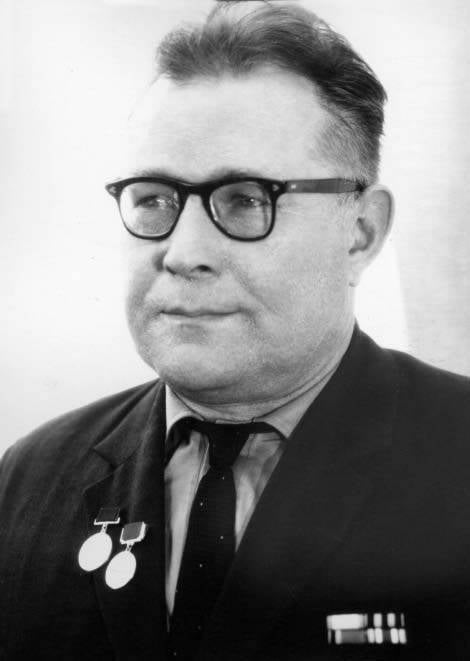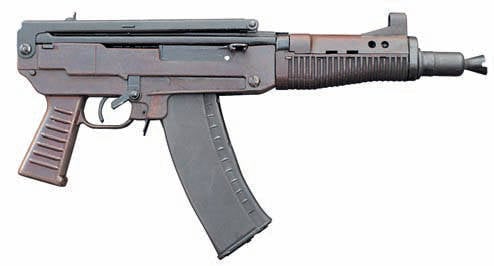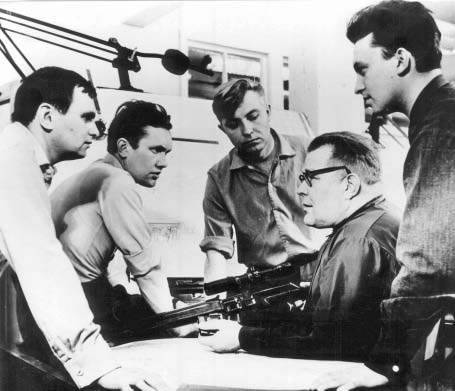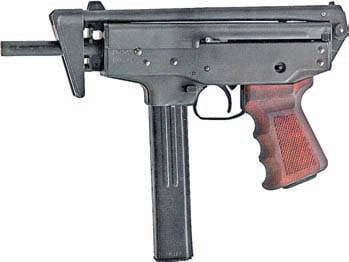Outstanding designer

This year marks the 90th anniversary of the birth of the outstanding weapons designer, creator of the legendary SVD sniper rifle, Evgeny Fedorovich Dragunov.
Evgeny Fedorovich Dragunov was born on February 20, 1920 in the city of Izhevsk. Both the grandfather and great-grandfather of the future designer were gunsmiths, which, apparently, predetermined his fate. In 1934, after graduating from seven classes of a comprehensive school, he entered the Industrial College, which trained specialists for an arms factory. There, Yevgeny Fedorovich received not only theoretical, but also practical training, in the morning, college students studied for 4-5 hours in classes, and in the evening 4 hours worked in workshops where they mastered plumbing, learned to work on turning and milling machines. Despite the intense study schedule, there was time for hobbies: Dragunov was seriously involved in shooting sports and by the time he graduated from college he was already an instructor in shooting sports of the first category. After graduating from technical school, Evgeny Fedorovich was sent to weapons the factory where he began to work as a technologist in the pit shop.
In the autumn of 1939, Dragunov was drafted into the ranks of the Red Army and sent to serve in the Far East. After two months of service, he was sent to the school of junior commanders of the AIP (Artillery Instrumental Intelligence). Successes in shooting sports helped Evgeny Fedorovich in the course of his further service, after graduating from school, he was appointed gun master of the school. When the Far Eastern Artillery School was formed on the basis of the school at the beginning of the war, Dragunov became the senior weapon master of the school. In this position, he served until the demobilization of 1945 in the fall.
In January, 1946, Dragunov re-entered the factory. Taking into account the experience of the army service, the personnel department sent Evgeny Fedorovich to the department of the chief designer for the position of technician-researcher. Dragunov began work in the maintenance bureau of the current production of the Mosin rifle and was included in the group that investigated the causes of the state of emergency that occurred in production. Taking into account the experience of the war, a new type of test was introduced into the technical conditions of the rifle - shooting 50 shots with the maximum possible rate of fire, while the store was loaded from the holder. During tests, it was found that with most of the rifles when the cartridges were sent, the top cartridge — the first cartridge — clings to the bottom edge — the second cartridge — and is so strong that it does not reach the barrel even after a two or three palm strike on the bolt handle.
Studies of rifles of the current production did not show any deviations of the dimensions of parts from the drawing ones. Two 1897 and 1907 rifles of testing were subjected to tests and got the same delay - it became clear that there was nothing to do with a rifle. Further research showed that the cause of the delays was a change in the shape of the liner flange made in 30-ies to increase the reliability of the ShKAS aviation machine gun. On the cartridges with the rim of the old form of the rifle worked without delay. This defect was ineradicable and the famous trilinear so “died” with it.
The C-49 rifle designed by E. F. Dragunov brought the USSR the first world record in shooting
The first project work of Evgeny Fedorovich was to participate in the development of a carbine chambered for arr. 1943 of the Year, which was held in 1946-1948. The carbine went through two rounds of ground tests, was recommended for military, but in 1948, it became clear to the military leadership that the development of a more promising model - a machine gun - would be successfully completed and the need for a magazine carbine disappeared. In the experienced Dragunov carbine, the following were designed: an integral folding bayonet with a lower blade position, a firing mechanism, an arrangement of the forearm and a receiver lining; the sector of the sight was calculated. In addition, the young designer was entrusted with the completion of the carbine on the observations of the landfill after the first round of tests.
The sports rifle CV-55 "Zenith" had a new design of the locking unit
In 1947, Dragunov was tasked with modernizing the carbine arr. 1944 of the year. Evgeny Fedorovich successfully completed the task, and in 1948, the carbine modernized by him successfully passed the tests. The next development of Dragunov was the modernization of a sniper rifle mod. 1891 / 30 with a PU sight on the bracket arr. 1942 of the year (Kochetova). The rifle had certain drawbacks, the main of which was that when the sight was installed, loading was possible with only one cartridge, loading from the holder was prevented by the sight. The sight was mounted high and when aiming the head had to be kept on weight, which greatly weary the shooter. In addition, the sight bracket together with the base weighed about 600. Dragunov managed to solve the problem by changing the design of the bracket. Unlike the usual location of the sight along the axis of the weapon, in his rifle he was shifted to the left and down, which made it possible to load the rifle from the holder and created more comfortable conditions for aiming. In addition, changes were made to other parts and mechanisms of the rifle: so the neck of the box became pistol-shaped, a warning trigger was introduced into the trigger mechanism, the barrel was heavier by 0,5 kg. Despite the weight of the barrel, the new rifle, which received the factory designation MC-74, turned out to be lighter than the standard one on 100 g, mainly due to the reduction in weight of the arm of the sight with the base to 230 g. The upgraded rifle successfully passed field tests, was recommended for production, but in series never went. It is interesting that in these tests the development of the young designer for the first time circumvented the design of such a weapon "bison" as S. G. Simonov.
Dragunov sniper rifle (SVD) was adopted by the Soviet Army in 1963
Option SVD with a plastic box
The subsequent 10 years of the life and work of Evgeny Fedorovich Dragunov are inextricably linked with sports weapons. The situation with him at that time was disastrous. Suffice it to say that even at the highest level competitions, the arrows used ordinary three-lines, selected, of course, by accuracy.
In 1949, Mr. Dragunov was tasked with developing a high-accuracy sports rifle; when firing, the diameter of the holes in 10 shots should not exceed 30 mm by 100 m. By December, the first batch of rifles had been made. Yevgeny Fyodorovich himself shot two of them and was amazed by the result, all the holes were closed with a twenty-pound coin (the diameter of the Soviet twenty-pound coin 22 mm). This rifle gained the C-49 index and brought the USSR the first world record in shooting.
In principle, this rifle was not particularly different from the Mosin battle rifle. The main differences were the receiver box without a window with a base for installing a sports dioptric sight, a heavy barrel with improved channel processing, a pistol bed with an adjustable butt pad.

Compact machine (MA) chambered for 5,45х39
Later, Dragunov created quite a few sporting rifles, standard, arbitrary, for biathlon, but the Zenit CV-55 rifle was a real breakthrough in the creation of high-precision weapons. The main innovation of the new rifle was the bolt with three symmetrically located battle lugs. Such a locking system more accurately and uniformly fixes the cartridge in the barrel chamber, significantly increasing the accuracy and accuracy of shooting. The second "highlight" of the rifle was that the barrel with the receiver were attached to the bed only in the vicinity of the receiver, while the barrel was hung, that is, it did not touch the box, which saved it from deformation when heated. It is safe to say that today no high-precision rifle can do without the use of these solutions.
In CV-55, EF Dragunov for the first time used the form of a box, which is now called orthopedic. In fairness it should be noted that he was not her inventor. For the first time, sporting rifles with a box of this form were produced in pre-war Estonia by the Tallinn-Arsenal plant. The trigger mechanism of the new rifle was equipped with a shneller. Its use made it possible to reduce the descent force to 20 g, practically there was no need to press the trigger, it was enough just to put a finger on it.
In a pair of 7,62-mm rifle was developed small-caliber "Strela" MTsV-55. The “Arrow” was also locked on the 3 lugs, but they were located not in front of the gate, but in front of the reloading handle, outside the extraction window. Such a solution made it possible to preserve the accuracy of the three-stop locking and, at the same time, to send the cartridge without the risk of damaging the delicate lead bullet. New rifles were recognized not only in the USSR - in 1958, Izhevsk rifles were awarded the Grand Prix of the exhibition in Brussels.
In 1958, the department of the chief designer was assigned the task of developing a self-loading sniper rifle. The difficulty of the task lay in the fact that the self-loading sniper had to surpass the sniper rifle of the 1891 / 30 model. on accuracy and accuracy of fire. In addition, the firing characteristics were to be guaranteed provided on a serial sample, instead of selecting and refining rifles, as was the practice at the time. A good example is the American self-loading sniper rifle M21, which was obtained by selecting the most heaped M14, followed by refinement of the barrel and the mechanisms almost by hand. Attempts to create a self-loading sniper rifle were undertaken before in the USSR, Germany, and the USA, but none of them were crowned with success. Due to the design features, self-loading rifles could not compete with the magazine rifles. The fact is that the work of automation inevitably causes collisions of moving parts that knock down the tip of the weapon.

Evgeny Fedorovich Dragunov (sitting) with colleagues at work (from left to right): Kamenev Eduard Mikhailovich, Nesterov Azariy Ivanovich, Aleksandrov Yuri Konstantinovich, Voznesensky Alexey Nikolaevich
The competitors of Dragunov in the competition were S. G. Simonov and the designer from Kovrov A. S. Konstantinov, who had extensive experience in designing self-loading and automatic weapons.
Evgeny Fedorovich Dragunov, by contrast, had the experience of creating high-precision sports weapons, in particular the trunks for him. It also helped that he himself was an athlete. The experience of the modernization of the sniper rifle arr. 1891 / 30 In the new sniper, many elements of sporting rifles were used: locking on three combat lugs instead of the generally accepted double-barreled one, the design of the bore and pitch rifling, a comfortable orthopedic butt. To eliminate the congenital self-charge defect, the automatic rifle was designed so that the moving parts began to move only after the bullet had left the barrel. To prevent the impact on the accuracy of the barrel deformation from heating during intensive shooting, the barrel lining was spring-loaded and could move relative to the barrel.
The first results of the ground tests were logical, the samples of S. G. Simonov and A. S. Konstantinov worked like clocks, but accuracy was one and a half times worse than the Mosinsky rifle. The sample of Dra-gunov was superior in accuracy even to the best of the Mosinsky snipers tested at the test site, but he grabbed delays and breakdowns with depressing regularity.
It seemed that Dragunov’s rifle was being pursued by some evil rock. During one of the tests there was a rupture of the locking unit of a single prototype. In order to prove that the rifle and moreover, I had to unzip the whole batch of ammunition. It turned out that several rounds of ammunition from the party were filled with ogregetting pistol powder, which led to a sharp increase in pressure when fired. To continue testing, the plant had to strain and produce a new sample in two weeks. Despite all the troubles, according to the results of the first ground tests of the rifle S. G. Simonov, only two competitors were removed from the competition and only two remained.

Submachine gun "KEDR"
They were competitors with tricks, they spent time at the landfills, shared good practices, so Dragunov shared with Konstantin trunks, and Konstantinov shared the store design over which Dragunov had been fighting for almost a year. The friendship of these talented designers and simply wonderful people lasted until the end of their lives.
3 July 1963. Sniper rifle was adopted by the Armed Forces of the USSR under the name "7,62-mm Dragunov sniper rifle" (SVD). For the development of the rifle design and its introduction into production in 1964, Yevgeny Fedorovich Dragunov was awarded the Lenin Prize.
At the beginning of the 90-s, the designers of Izhmash developed a version of the rifle with a butt folding to the right side of the receiver, which was put into service under the name SVDS.
Success did not turn his head, Dragunov continued to work on new designs of weapons. In 1968, under his leadership, the TSV small-caliber training sniper rifle was developed for the initial training of snipers. Free rifle bolt along with a return spring was made a separate quick-detachable unit, the receiver was cast from a light alloy. The rifle was tested, an experimental batch was manufactured, but it never went into a series.
In 1970, on the instructions of GRAU Dragunov, based on the SVD, he designed a B-70 sniper rifle.
Its distinctive feature was the presence of automatic fire mode. Thus, the military hoped to get a sample combining the qualities of a sniper rifle and a machine gun for later replacement with a single sample. For the new rifle, a twenty-seat magazine and a bipod of the original design were designed: the bipod's axis of rotation was located above the barrel axis, which significantly increased the stability of the rifle when fired. Recently, the bipod of such a device began to appear on some foreign sniper rifles. In addition, the bipods were equipped with a device that stabilized the weapon when firing in short bursts. Thanks to him, in terms of shooting accuracy, the rifle easily fulfilled the standard of a light machine gun. According to the results of tests, B-70 still did not justify the hopes placed on it and the topic was closed.
In 1971, Yevgeny Fedorovich developed a sample of a small-sized submachine gun chambered for 9x18 of a Makarov pistol under the designation PP-71. The submachine gun passed all the stages of testing, but the low power of the Makarov patron did not suit the military and it was not accepted for service. The weapon turned out to be in demand at the beginning of the 90s, when it began to be produced for arming the Ministry of Internal Affairs by the Zlatoust plant. When using weapons in urban environments, in crowded places, the small energy of the cartridge has evolved from a disadvantage to an advantage, making its use safer. The name “KEDR” -design of Evgeniy Dragunov PP-71 received after its modernization by the son of Evgeny Fedorovich - Mikhail Evgenievich Dragunov.
In the late 70-ies Dragunov developed a small-sized machine gun chambered for 5,45x39. The main receiver MA together with the control handle was cast in a single piece of polyamide, it contained a block trigger mechanism and a magazine. The guides for the bolt carrier were made on the cover of the receiver, and the front liner with the barrel was riveted to it. The cap was connected to the receiver with an axle in front and a hook at the back. A total of 5 prototypes were produced, which showed good results.
It is impossible not to note the contribution of Dragunov to the creation of hunting weapons. In the 1961 year, when the development of the SVD was carried out, the self-loading hunting carbine “Bear” was developed in parallel for the cartridge 9х53. It is quite natural that the most successful design solutions obtained in the design and development of a rifle were used in the new carbine. Unlike a rifle, the carbine originally had an integral magazine with a capacity of four cartridges, which were charged one at a time when the shutter was open.
Later, a detachable single-row magazine was also designed for it for four cartridges.
The carbine was originally designed as an elite class weapon and was not marketed. It was produced in small series and its owners were persons who occupied a high position in the hierarchy of the USSR.
One of the owners of the "Bear", in particular, was L. I. Brezhnev, who highly appreciated this weapon.
In 1992, the serial production of the Tiger hunting carbine, developed on the basis of the SVD, began.
The prototype of the carbine was developed by Dragunov in 1969 year, at the same time, by the order of the Ministry of Defense, a single batch of carbines was released chambered for 7,62х53. At present, Tigr carbines in various versions are manufactured for the cartridges 7,62x54R, 7,62x51 (.308 Win.), 9,3x64, 30-06 Spring.
In total, during his work in the department of the chief designer, Evgeny Fedorovich Dragunov completed 27 developments, received 8 copyright certificates for inventions. The ideas he embodied in the design of sports and sniper weapons, continue to live in many domestic and foreign models. The name of Evgeny Fedorovich Dragunov occupies a worthy place among the famous designers of gunsmiths of the world.




Information